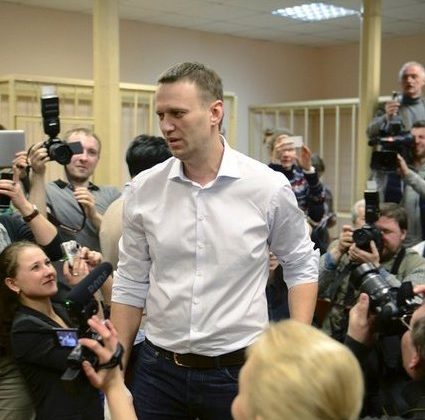Russia holds a special place in Armenian foreign and security policy, just as Armenia plays a unique role in Moscow’s regional Caucasus strategy. This memo analyzes the current state of Russian-Armenian relations, paying special attention to the regional context that affects them. It also contrasts the simplistic perceptions of Russian-Armenian relations that exist in both countries (and abroad) to the complex, multilevel political interaction that exists in reality.
Background
Russian-Armenian relations have been fairly stable throughout the post-Soviet era. Security and economics are the main spheres of cooperation, but culture and humanitarian issues also form part of the relationship. Both sides place an emphasis on Russia’s involvement in the process of negotiating a peaceful resolution to the Nagorno-Karabakh conflict as a co-chairman of the OSCE Minsk Group, which has been mediating the conflict since March 1992.
Armenia considers military-political cooperation with Russia to be an essential element of its security and defense policy. Russia has a military base in Armenia, and Russian border guards assist Armenia in protecting its borders with Turkey and Iran.[1] Armenia is an active member of the Collective Security Treaty Organization (CSTO), a military-political bloc under Russian auspices, and is the only member of the CSTO in the South Caucasus.
Russia is also the main investor in Armenia. Total Russian investment exceeded $3 billion through 2012, mainly in the energy and communications sectors. Armenia purchases natural gas from Russia at preferential rates—in post-Soviet Eurasia, only Belarus receives a better price. Cultural and person-to-person interactions are also important factors influencing bilateral relations.[2] The majority of Armenia’s population has a good command of the Russian language, and a large and influential Armenian diaspora resides in Russia.[3] One could easily get the impression that Armenia and Russia are tied closely together in a relationship of mutual affection.
The Myth of “Tender Affection”
Russia arms, invests, and politically supports Armenia. In turn, Armenia provides territory for a Russian military base deployment, contributing to the preservation of Russia’s presence in the South Caucasus.[4]
Many Armenians view their country’s relationship with Russia to be a natural outgrowth of an inevitable historical dependence, particularly given the context of the 1915 Armenian genocide and the existential threat posed by that event. They perceive Russia to be the only guarantor of Armenia’s security. In turn, many Russian elites tend to paternalistically take for granted Armenia’s inclusion in Russia’s post-Soviet sphere of influence or, even more extreme, Armenia’s role as Russia’s geopolitical outpost in the South Caucasus.
Such clichés do not hold up to careful analysis, however. First of all, there are a lot of dark pages in Armenian-Russian relations. During World War I, Russia was largely unable to prevent the implementation of the Armenian genocide by Ottoman authorities; Turks regarded the very existence of ethnic Armenians in senior command posts of the Russian army in the Caucasus as a convenient justification to destroy the Armenian population of western Armenia. Next, a 1921 agreement between Bolshevik Russia and the Kemalist government of Turkey partitioned the first Armenian republic, created in 1918 after the collapse of the Russian Empire. Later, Bolsheviks resolved to include both the disputed Nagorno-Karabakh and Nakhichevan regions in Soviet Azerbaijan. The position of the Soviet Union in the Karabakh conflict in the late 1980s was also largely anti-Armenian. Moscow regarded the Karabakh movement as anti-establishment and Western-backed and supported the authorities of Soviet Azerbaijan while opposing the non-Communist government of former dissidents that had come to power in Armenia. While the first post-Soviet Armenian government had a good relationship with Boris Yeltsin’s administration in the first half of the 1990s, Russia still transferred significantly more military equipment to Azerbaijanis than to Armenians in the early stages of the Karabakh war.
Even in recent years, all has not been rosy. Significant Russian arms sales to Azerbaijan have resumed. In 2011-2013, these included S-300PMU-2 “Favorit” air-defense systems, “Smerch” multiple-launch rocket systems, T-90S main battle tanks, 2S19 “Msta-S” self-propelled artillery systems, and Mi-35M attack helicopters, as well as other types of arms systems, weaponry, and military equipment. Such equipment is not only technically superior to the weapons Russia has delivered to Armenia, its CSTO ally, but more modern than even those Russian troops themselves use in the North and South Caucasus. While Moscow tries to balance its multimillion ruble arms sales to Azerbaijan with free (or almost free) weapons transfers to Armenia, Armenians meet each Russian-Azerbaijani arms contract with suspicion. Consistent with Russia’s traditional view of relations with partners in post-Soviet Eurasia, Moscow feels no pangs of guilt at “betraying” its ally and considers its arms transfers to Armenia as full compensation for its cynical commercialism.
For its part, Armenia has pursued a foreign policy of “complementarism” despite its security alliance with and economic dependence on Russia. This is an attempt to utilize, and maintain a balance between, the interests of all international and regional powers involved in the South Caucasus. While Armenia tries to minimize the risks of foreign policy diversification, the gradual intensification of its relations with the West leads to “fits of jealousy” in the Kremlin, even if these are not very visible. Moscow prefers to privately convey its displeasure to the Armenian leadership.[5]
At the same time, public perceptions are modifying over time, especially through generational change. Soviet nostalgia is becoming less of a factor in Armenian-Russian relations. Presidents Vladimir Putin and Serzh Sargsyan may be the last leaders of Russia and Armenia who have something in common in their careers, political views, and outlook. The next Armenian leader may not even speak Russian. Among Armenia’s younger generation, Putin’s Russia is increasingly perceived to be hindering democratic processes within Armenia. Russians, in turn, are increasingly annoyed at the nostalgic appeals of authorities and others to post-Soviet community. Among Russians, the collapse of the USSR is no longer widely perceived to be a “great geopolitical catastrophe,” as Putin once described it. Finally, populist Russian calls to “stop feeding the Caucasus” apply at least as much to the South Caucasus as they do to the North.
Features of Pragmatism or Limits to “Finlandization”?
More objectively, we can characterize relations between Armenia and Russia mainly in terms of hard pragmatism, enhanced by geography. Given Armenia’s substantially asymmetrical relationship with Russia, the absence of a shared land border provides a favorable context for pragmatic cooperation between Yerevan and Moscow. In this sense, Armenia is in a better position than either Georgia or Azerbaijan.
It is possible to speak about a certain “Finlandization” of Armenia in military-security and economic spheres. The Armenian foreign policy of complementarism, based on the need to balance local interests of the West, East, and “the Rest,” in some ways resembles Finland’s Cold War-era foreign policy. Like Finland, forced to take into account the geopolitical interests of the Soviet Union and the communist bloc on the one hand and the U.S.-led Western alliance on the other, Armenia is also trying to profitably combine the interests of Russia, the United States, the European Union, and Iran, which largely oppose each other on regional issues. For example, as one of the results of such foreign policy conduct, Armenia has no direct geographical or transportation links with Russia, but is still a beneficiary of major Russian investments, particularly in the transportation and infrastructure sectors. In this way, Moscow compensates Yerevan for its strategic cooperation in military-strategic and geopolitical spheres.
At the same time, the “Finlandization” of Armenia associated with dependence on the Russian “security umbrella” and economic aid also has its limits. For instance, it is almost invisible in the domestic political landscape of Armenia, where there exists a certain political consensus on the main framework of the country’s foreign policy. As Alexander Iskandaryan has written,
“Despite popular perceptions to the contrary, this does not change much in the Armenian domestic perspective. The reasons are quite plain. Russia need not—and does not—particularly care what sort of domestic policies are in place in Armenia as long as [Armenia] stays under Russia’s military wing and does not choose an openly pro-Western orientation.”[6]
Moscow has to consider the opinion of Yerevan in its regional policies as well, whether in its relations with Turkey and Azerbaijan or its efforts to prevent a resumption of hostilities in the Karabakh conflict. This can sometimes be likened to “the tail wagging the dog.” Armenia has become increasingly important to Russia in recent years, especially taking into account the current low point in relations between Moscow and Baku, as reflected in the closure of the Russian Gabala radar station in December 2012 and the almost hopeless deadlock with Georgia after the August 2008 war (even after Bidzina Ivanishvili came to power after 2012 parliamentary elections). After all these negative dynamics in relations with Azerbaijan and Georgia, Moscow understands that if Russia also “loses” Armenia this would mean the end of Russia’s military and political presence in the South Caucasus. That is why the Kremlin does not even try to conceal its jealousy as it watches Armenia’s efforts to strengthen ties with the EU and sign an Association Agreement and Deep and Comprehensive Free Trade Agreement at the November 2013 Eastern Partnership summit in Vilnius.
The limits of Moscow’s influence over Yerevan were evident in the development of Armenian-Georgian relations after the 2008 Russia-Georgia war. The war was a test for Armenia, which allowed it to once again demonstrate the effectiveness of complementarism as a conceptual basis for Armenian foreign policy. Indeed, during the war between Russia (its military-political ally) and Georgia (historically Armenia’s closest neighbor and main transportation hub), Armenia was able to maintain an active neutrality, despite pressure from Moscow to recognize the independence of Abkhazia and South Ossetia.
In the end, however, Armenian-Russian relations are likely to persevere over areas of difference. Due to geographical, political, and regional contexts, another kind of cooperation is likely impossible for now. The current format of cooperation will persist as long as Yerevan requires arms and investments and Moscow wants a strategic partner that can assure its military-political presence in the Caucasus.
[1] The 102nd Russian military base has been located in Armenia since 1992, based on the former Soviet Army units on the territory of Armenia. In August 2010, the Additional Protocol to the Treaty of 1995 was signed on the functioning of Russian military bases on Armenian territory. According to the protocol, the geographical scope of responsibility for the 102nd base has expanded to include the entire territory of Armenia (not just along the perimeter of the former Soviet borders with Turkey and Iran) and prolongs the duration of its location. Armenia interprets this document as a guarantee of direct military assistance from Russia in case of war with Azerbaijan.
[2] For more about the current dynamics in Russian-Armenian relations see Sergey Minasyan, “Russia and Armenia,” Russian Federation 2012: Short-term Prognosis, Tartu University Press, 2012; Sergey Minasyan, “Russia and Armenia,” Russian Federation 2013: Short-term Prognosis, Tartu University Press, 2013.
[3] According to the official 2010 census, around 1.2 million Armenians hold Russian citizenship. Hundreds of thousands of ethnic Armenians (citizens of Armenia or other countries) permanently reside in Russia.
[4] For more about Russian-Armenian relations in the military-security sphere, as well in the framework of the CSTO, see Sergei Minasyan, “Look Not a Gift Tank in the Muzzle: What Is CSTO Membership for Armenia?” Russia in Global Affairs (January – February 2013).
[5] Sergey Minasyan, “Multi-vectorism in the Foreign Policy of Post-Soviet Eurasian States,” Demokratizatsiya, 20, 3 (Summer 2012), 269.
[6] Alexander Iskandaryan, “Armenia-Russia Relations: Geography Matters”, Spotlight on Armenia, ed. Adam Hug (Foreign Policy Centre: London), February 2011, 55.










